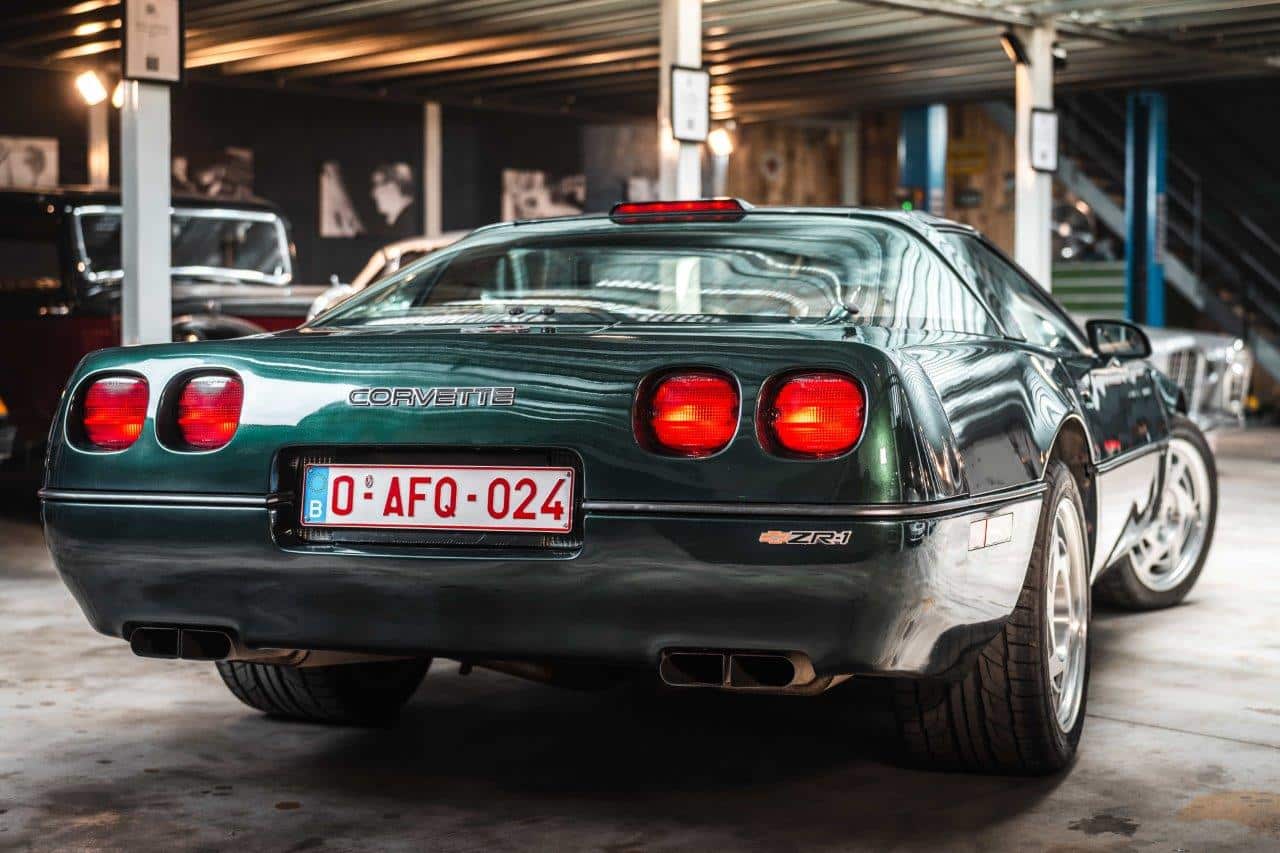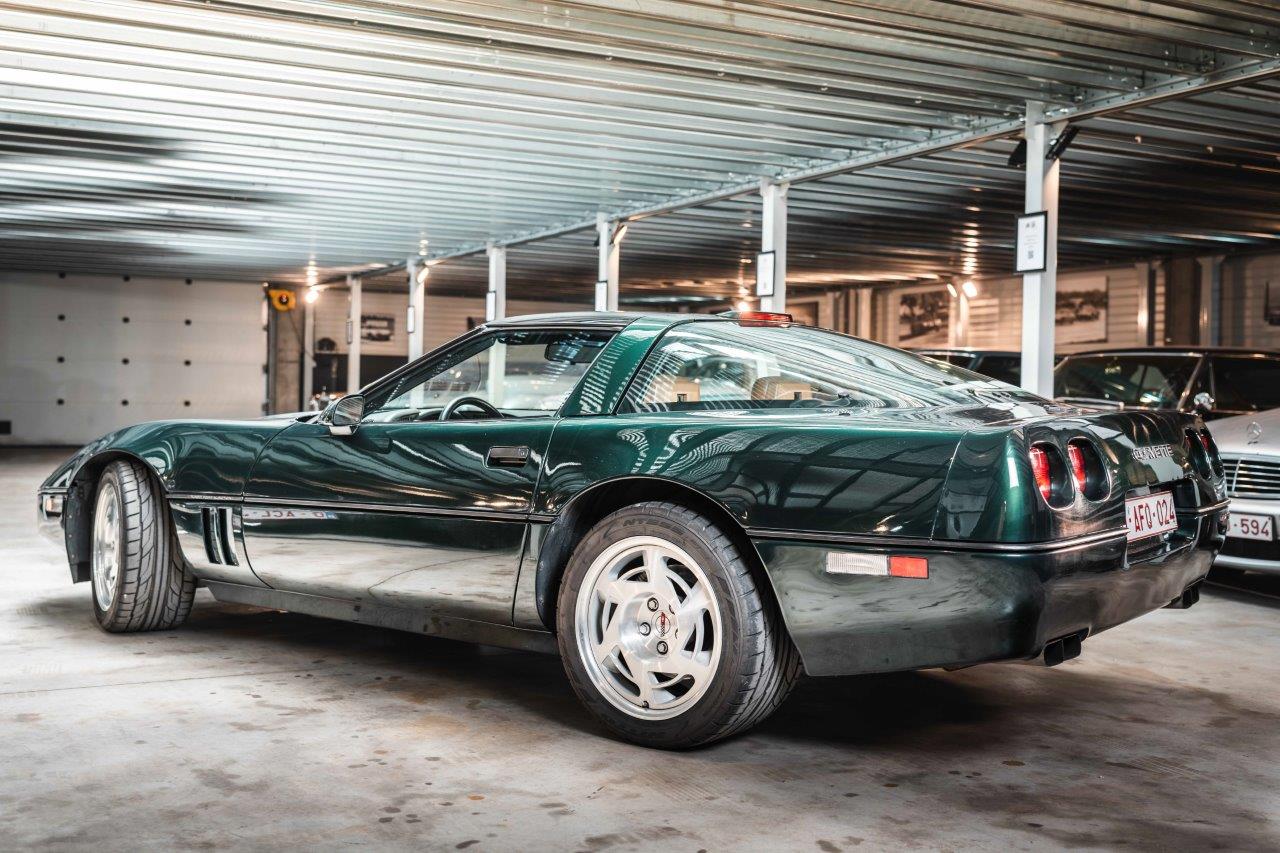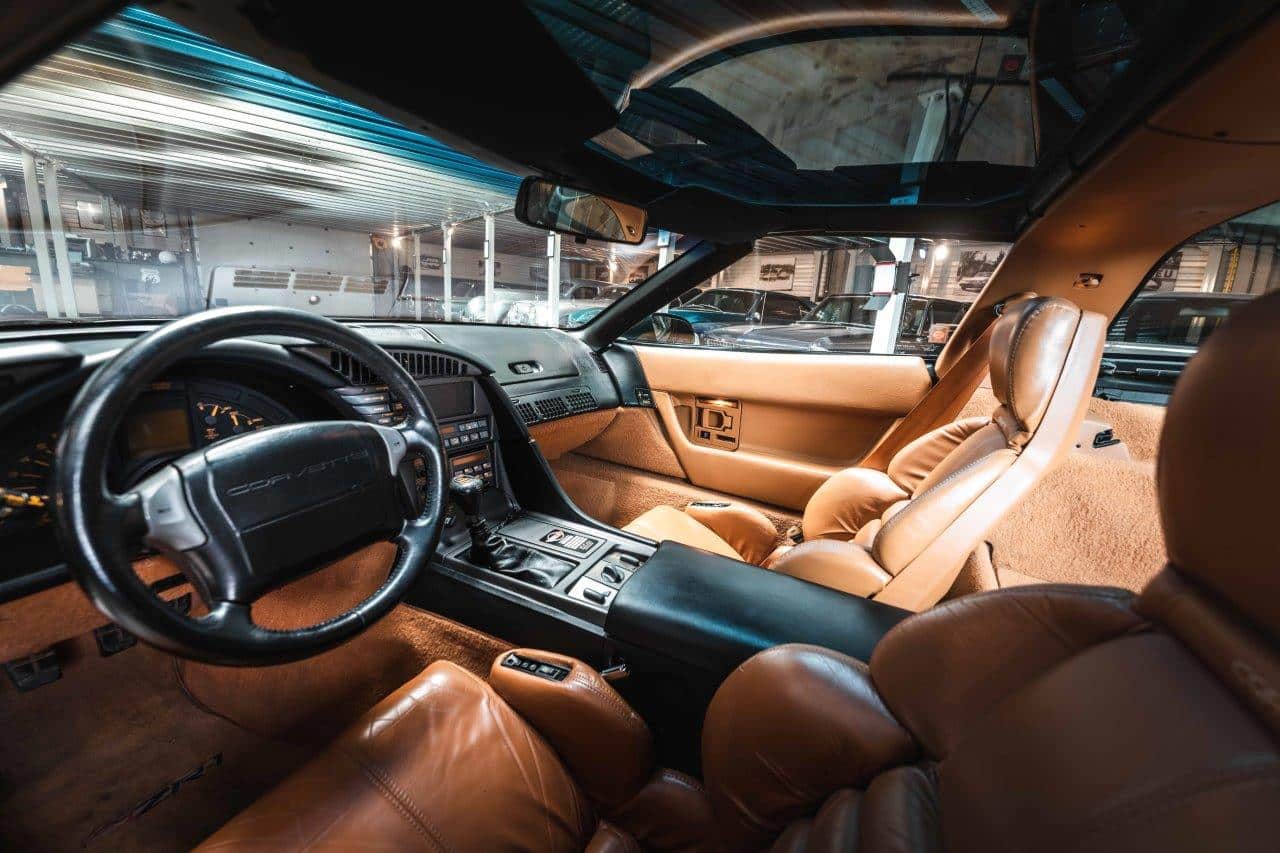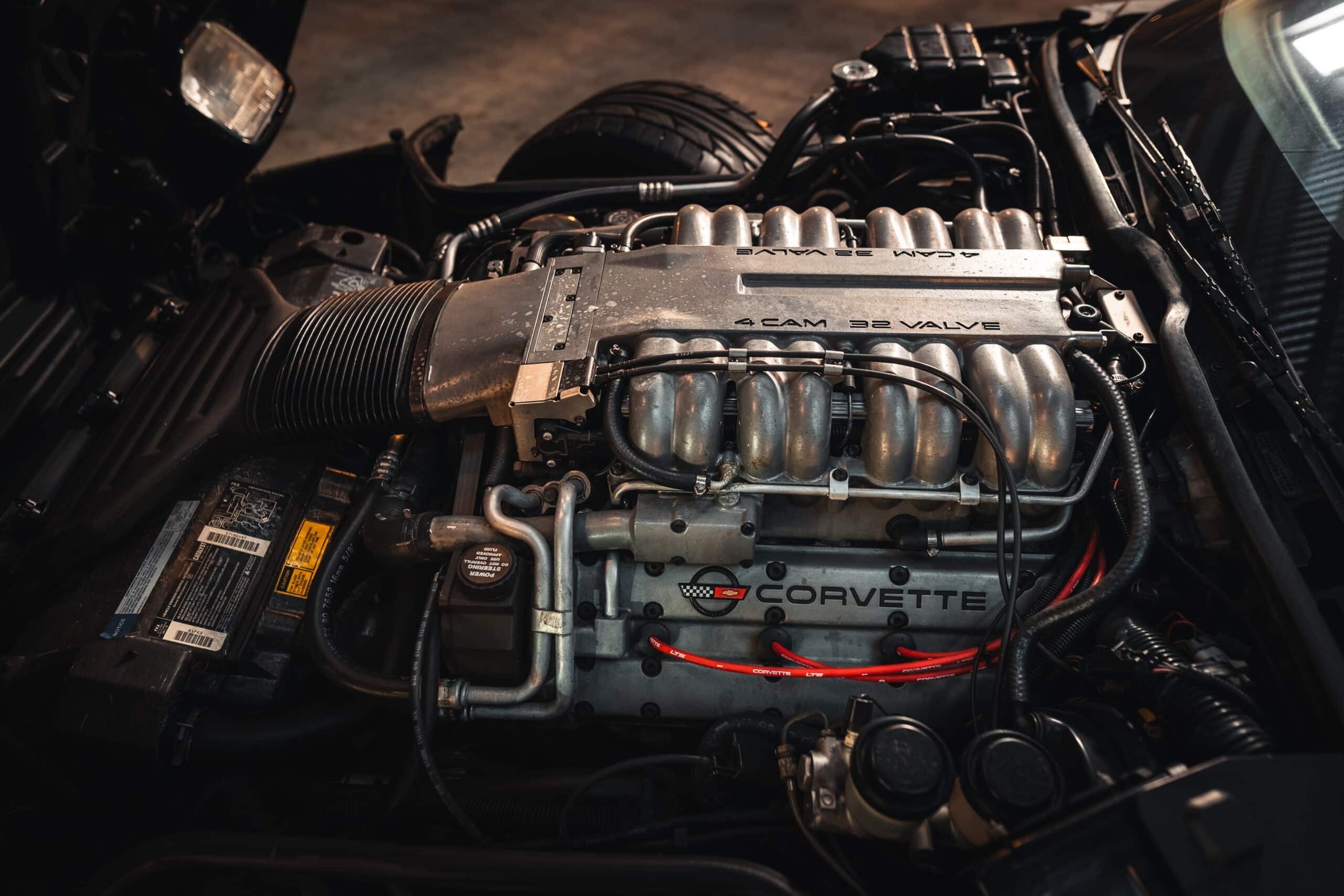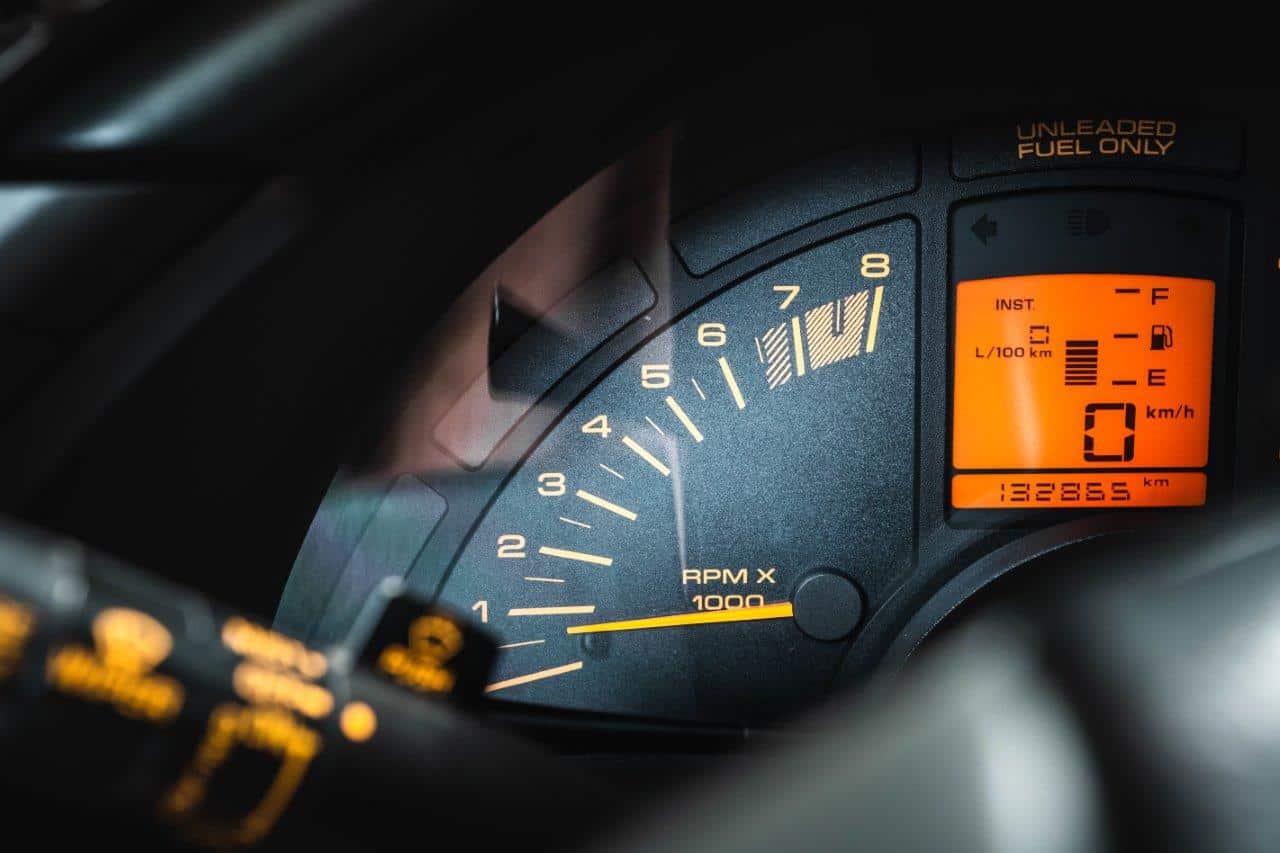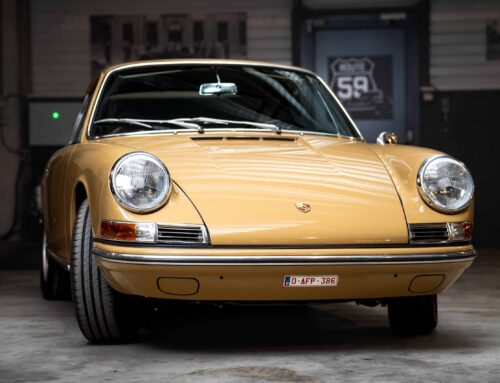Chevrolet Corvette C4 ZR-1
| Brand | Chevrolet |
| Model | Corvette C4 ZR-1 |
| Color | Green |
| Transmission | Manual 6 gears |
| Pk | 380 ch |
| Year | 1990 |
| Price | Not for sale |
In late 1987, rumors of an all-new high-performance Corvette built on the fourth-generation platform began to circulate in the automotive press. Dubbed the “King of the Hill,” the secret supercar was supposed to be a world champion, and in March 1989, GM introduced its impressive Corvette ZR-1 at the Geneva Motor Show. Although only 6,939 were built, the car remains a memorable piece of Corvette history, as well as a bridge between the performance Corvettes of the past and present. From 1970 to 1972, Chevrolet offered an RPO ZR1 option for the Corvette that included a 350cc, 370 horsepower V8 coupled with a short-throw four-speed transmission, heavy-duty brakes, transistorized ignition, aluminum radiator and heavy-duty suspension. This configuration was not recommended for road driving, but those who chose to exercise their Stingray in a closed environment surely saw the benefits of this package. The 1990 ZR-1 uses a convex rear bumper, which will appear on the entire Corvette range in 1991. When the fourth-generation Corvette debuted for the 1984 model year, the car’s handling was praised almost universally. However, its 205 horsepower, 350cc V8 did not, and a few years after its launch, the car’s disappointing performance began to impact sales. GM had been working on developing its own high-performance engine, but it was proving difficult to build one that retained the civility needed for everyday driving… The Lotus Group, which GM had acquired in 1985, then stepped in: Lotus developed an innovative strategy: each cylinder was fitted with two intake valves, one on a cam profile that favored fuel consumption and torque, the other on a cam profile that favored power.
Under low load, only the first valve is activated.
Under high load, both are activated simultaneously.
Each intake manifold has its own injector.
As a result, the LT5 block, as it is called, has 16 injectors, 8 of which are in permanent operation.
To manage all this, you need a powerful ECU which, fortunately, is already under development at Delco.
Lotus has also designed a dual-flow cooling system to cope with the different thermal management of the heads and cylinders.
The compression ratio is higher: 11.0:1 versus 9.5:1 for the L98.
It was testing of this engine (a variant of which appeared in the 1986 Corvette Indy concept) that led to rumors of a “King of the Hill” Corvette, and by March 1989 GM was ready to launch the car. The Geneva launch was no accident, and GM made sure to invite press from around the world to test drive the car in Europe. Car and Driver even dubbed it the “Corvette from hell” for its performance potential, and as if to illustrate that the ZR-1 wouldn’t suffer from misuse, a power-limiting lock was standard equipment. In addition to the Lotus-designed V8 under the hood, the ZR-1 featured a three-inch wider rear track, necessitated by its oversized 315/35-17 rear tires. This change required new doors, as well as a new rear bumper that took on a convex shape to distinguish it from lesser Corvettes (for the 1990 model year, anyway). The taillights of the ZR-1 models were rectangular in shape, but in profile, the ZR-1 looked very much like a basic Corvette, even though it had different wheels. The public response was enthusiastic: it has to be said that the performance figures were impressive for the time: 380 hp at 5,800 rpm, 501 nm at 5,600 rpm, 0 to 100 km/h in 4.4 seconds, 290 km/h top speed, 0.94 g lateral acceleration.
An American car capable of holding its own against the likes of Porsche 911 Turbo, Lamborghini Countach or Ferrari Testarossa… and not just in a straight line!
To add insult to injury, Chevrolet broke several speed records in February 1990, in Stockton, Texas: the 24-hour record (at an average speed of 282.99 km/h), the 500-mile record (at an average speed of 279.62 km/h) and the 5,000-km record (at an average speed of 282.72 km/h), all with a production vehicle, simply fitted with racing tires.
Amazing! Neither GM nor Lotus had the capacity to build the ZR-1’s LT5 V8 in sufficient quantity, so production of the homemade engine was turned over to Mercury Marine in Stillwater, Oklahoma. Assembly proved costly, as did extensive modifications to the Corvette’s body to accommodate the ZR-1’s changes, and the car was priced accordingly. In 1990, a base model Corvette could be purchased for $31,979, but the cost of the ZR-1 package alone added $27,015 (nearly 84.5 percent of the selling price). Despite this, and despite dealer margins that would have doubled the price, the initial demand was respectable. For the 1990 model year, GM built 3,049 units, followed by 2,044 in 1991, 502 in 1992 and 448 each year from 1993 to 1995, when production of the ZR-1 ended. This 1990 Chevrolet Corvette ZR-1 is finished in polo green metallic (one of only 105 produced!) with a “tobacco” leather interior. It was sold new by C&M Chevrolet of San Diego, California in August 1990. Factory features include Selective Ride and Handling, a Delco-Bose CD stereo, cruise control and automatic climate control, as well as power seats and power windows. Modifications include a Haibeck Automotive Technology performance ECU chip, an aluminum radiator and a custom cat-back exhaust. Imported from California in 2020, it was recently serviced: the service included replacement of the tires (Nitto NT555 G2 measuring 275/40 at the front and 315/35), battery, oil pressure switch and seals for the intake plenum, injectors and ignition coils. The ZR-1 still includes its original, fully functional radio system. There are no electronic problems and no warning lights on the dashboard. The two removable roofs (glass and metal) are also present, along with a large set of documentation including the original order form.
Source : Le guide de l’auto





